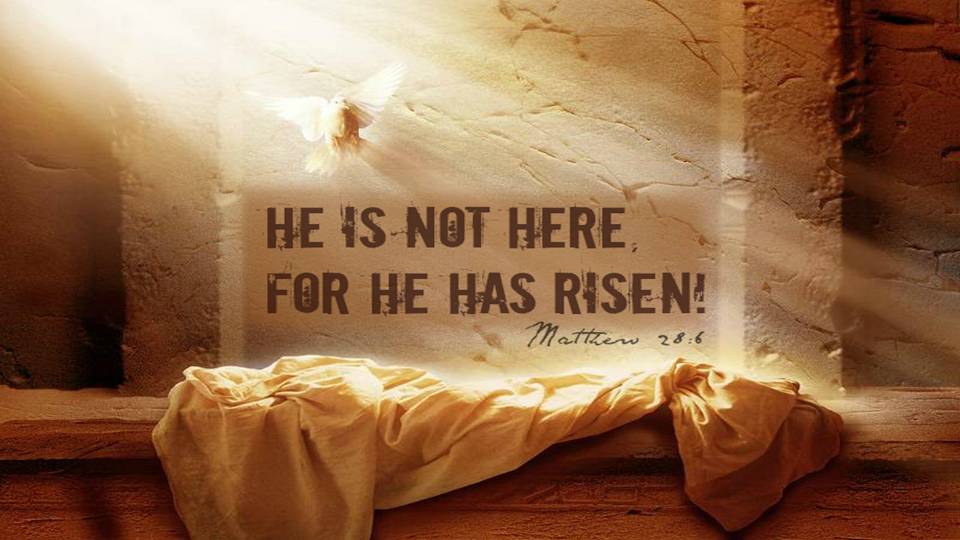Every year people around the world gather together to celebrate Easter. For many, it is a deeply religious holiday that honors the resurrection of Jesus Christ, while others simply see it as a time to hunt for colored eggs and eat candies with their family. No matter how people celebrate it, the history of Easter is a fascinating study in how cultures interchange and how religious history becomes part of modern day life.
Here are interesting facts you should know about the Easter holiday
1. Christians celebrate Easter as the day Christ rose from the tomb, but He’s not alone
We all know the story that easter is a Christian holiday celebrating the day Jesus Christ rose from the grave following his crucifixion. According to Matthew 28, on the third day after Christ’s death, an angel of the Lord came down from heaven to the tomb, rolled back the heavy stone that had been placed in front to prevent Christ’s disciples from moving his body. The guards fainted, and Jesus left the grave, heading towards Galilee to meet up with his disciples.

What you don’t know is that according to the Bible, when Christ came back to life he didn’t come alone. In Matthew 27:52-53 the Bible says,
“and the graves were opened, and many bodies of the saints which slept arose, and came out of the graves after his resurrection, and went into the holy city, and appeared unto many.”
According to non-canonical books from the Ante-Nicene Library, there are numerous religious figures at the time saw the saints who rose from the grave with Christ, and reportedly these saints remained on earth for 40 days after Christ’s resurrection.
“When we were coming from Galilee we met at the Jordan a very great multitude of men, fathers who had been some time dead. And they went and walked around all the region of the Jordan and the mountains, and they were coming back without finding them. And, behold, suddenly there appeared coming down from Mount Amalech a very great number, as it were, twelve thousand men, who had risen with the Lord.”
The Gospel of Nicodemus, Vol 8, Chapter 1:
2. Due to the Vernal Equinox, Easter falls on a different day every year

Every year Easter falls on a different day, and blame the moon for that. Jesus’ death coincides with the Jewish Passover, which is celebrated during the first full moon after the vernal equinox, better known as the first day of spring.
The rule was set for the Christian church by the Council of Nicaea, stating that Easter would be held on the first Sunday after the first full moon occurring on or after the vernal equinox.
3. The word Easter and its roots
Eostre is the Germanic goddess of spring and fertility who had her festival around the spring equinox, March 20. In keeping with a long tradition of co-opting pagan dates and traditions into their celebrations, the church took this as well.
According to an 8th century monk named Saint Bede the Venerable, in a text he wrote called “On the Reckoning of Time,” Bede explains that the name Easter was taken from the Teutonic goddess Eostre: “Eostur-month, was formerly named after the goddess Eostre, and has given its name to the festival.”

4. Easter eggs came from Lent
While there are certainly pagan traditions that use eggs as symbols of fertility, the Christian tradition of Easter eggs has its roots in Lent. Lent is a preparatory period before Easter where some Christians, particularly Catholics, abstain from certain foods or beloved activities as a form of fasting.
In medieval times this fast included meat, milk, and eggs.

Of those three foods, eggs are the only ones that don’t spoil quickly without refrigeration. Today, the long Lenten fast often led to a surplus of eggs when Easter rolled around, as they are cheaper to buy and give as an Easter gift.
5. Eating lamb on Easter

Serving lamb is a traditional aspect of the Jewish Passover Seder that has become a part of the Easter tradition for many Christian families, but few people know exactly why Christians picked it up. References to Christ being the Lamb of God are common, but the meaning of that becomes more interesting when you look at the scriptures. Jesus’ death shares aspects with the way sacrificial Passover lambs are slaughtered.
A traditional Passover lamb cannot have its bones broken dating back to the decrees given to Moses from God. Like the Passover lamb, Christ was crucified without any of his bones being broken, unlike the other two men he was executed alongside. In John 19: 31-34 the Bible says that when the soldiers came to break Jesus’ legs to speed along his death, they found he had already died. Instead, they pierced his side with a spear.
6. Peter probably didn’t hear a rooster crow three times
In the story of Jesus’ final days, Christ told his disciple Peter,
“before the rooster crows today, you will deny three times that you know me.”
Later that evening Peter is recognized as one of Christ’s disciples, but claimed that he never knew the man.

Just then he hears the rooster crow, then Peter remembered the word Jesus had spoken and he went outside and wept bitterly.
There’s just one problem with this story: Chickens and roosters were not allowed to be raised in Jerusalem at the time. According to the Mishnah, the earliest compilation of rabbinic oral law, roosters and chickens were forbidden from being raised due to concerns about keeping the temple pure. So what’s the real story? It comes down to translation. In some original translations the word was not rooster crows, but cockcrow.
Since chickens could not be raised in Jerusalem, cockcrow in this context most likely relates to the man blowing a trumpet to let priests know it was time to start preparations for the day. Because the phrase was commonly used back then, people knew what the scripture meant. As translations moved through history, this meaning was briefly lost, leading us to believe Peter heard the crowing of a rooster.
CTTO for the images used and inspired by the following below:
biblegateway
christianitytoday
ucg.org
penews.org




















Leave A Comment
You must be logged in to post a comment.